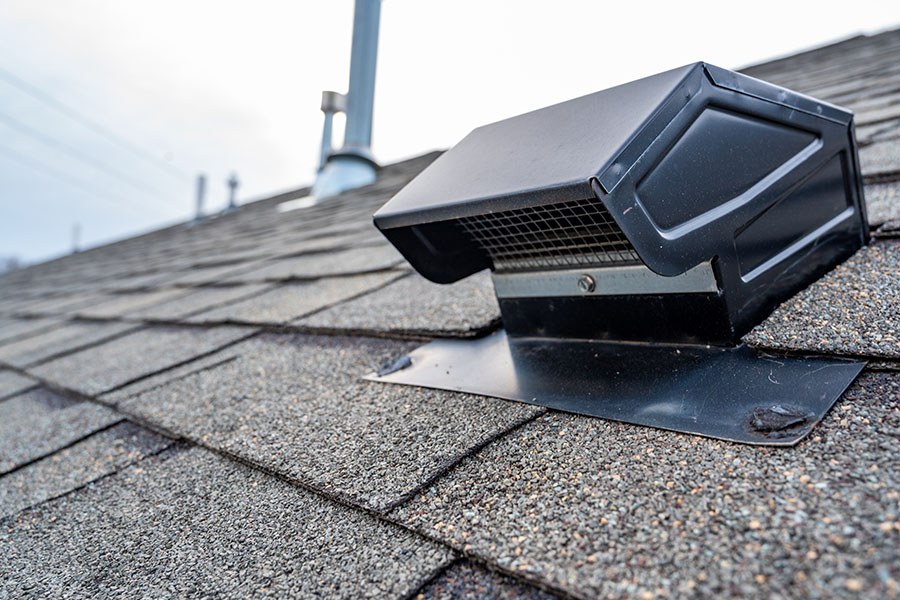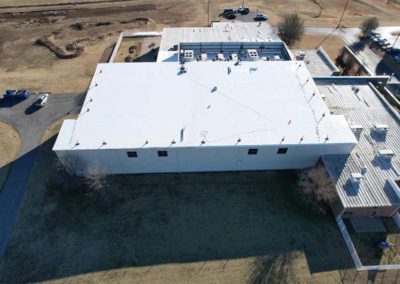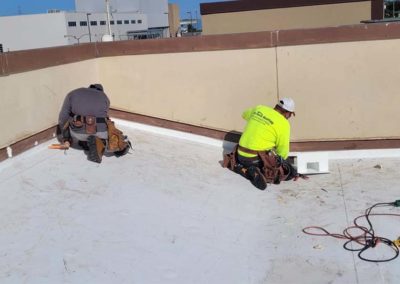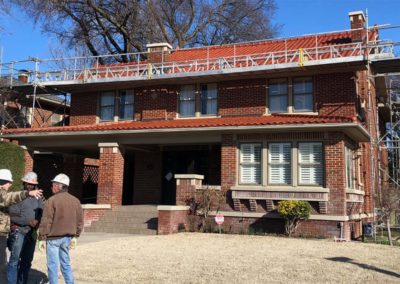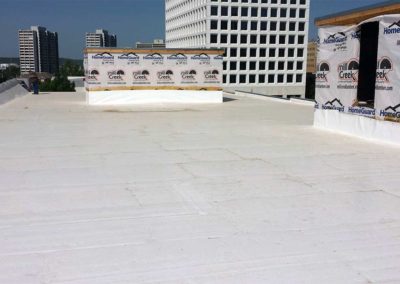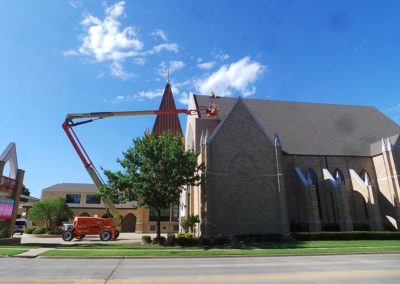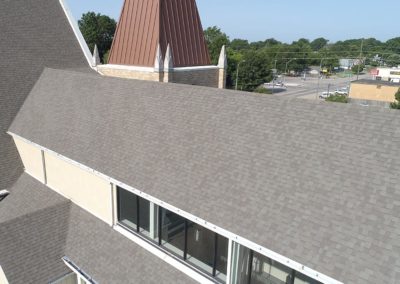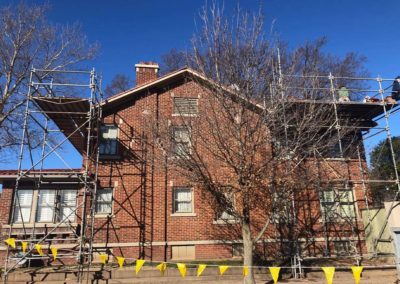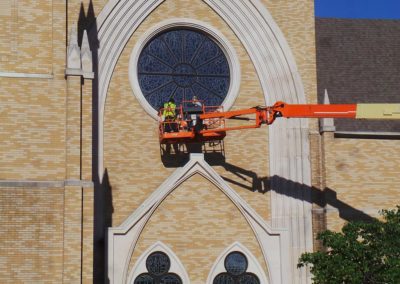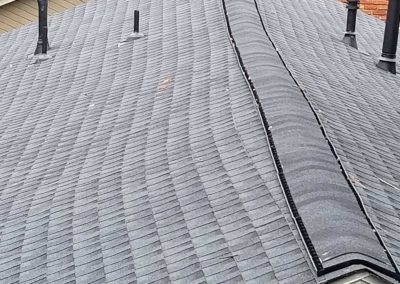What is a Roof Vent?
A roof vent is an essential element of a home’s roofing system, purposefully engineered to regulate and manage airflow within the attic space.
Its primary function is to maintain a balanced and healthy environment by enabling the seamless exchange of air between the interior attic space and the outside atmosphere.
It manages airflow regulation. Roof vents are strategically placed to ensure a continuous flow of air.
This allows fresh air to enter the attic and stale, warm, or moisture-laden air to exit.
This exchange is crucial for preventing the buildup of heat and humidity, which can adversely affect the home’s structural integrity and indoor comfort.
It plays an important role in temperature regulation.
By facilitating the movement of air, roof vents help stabilize the attic’s temperature.
In the summer, they allow hot air to escape, preventing it from seeping into the living areas and reducing the need for air conditioning.
In the winter, they help reduce attic heat that could melt snow on the roof, which can refreeze and form damaging ice dams.
Roof vents also play a critical role in managing moisture levels.
Without proper ventilation, moisture can accumulate from various sources, such as household activities and weather conditions.
This trapped moisture can lead to problems like mold growth, wood rot, and deterioration of insulation, all of which can compromise the structural health of the home.
Why is Roof Ventilation Important for Your Home?
Roof ventilation is a critical aspect of home maintenance and energy efficiency, playing an essential role in safeguarding both the structural integrity of your house and the comfort of its inhabitants.

Temperature Regulation
During hot weather, a properly ventilated roof helps expel hot air from the attic, reducing the temperature indoors.
This means less reliance on air conditioning systems, leading to lower energy consumption and reduced utility bills.
In colder months, ventilation helps maintain a cooler attic, which can prevent snow on the roof from melting and refreezing at the eaves.
This process, known as ice damming, can lead to significant roof damage.
Moisture Control
Roof ventilation helps control moisture levels by allowing humid air to escape.
Without proper ventilation, moisture from everyday activities like cooking and showering can rise into the attic, condensing on cooler surfaces and potentially leading to mold growth and wood rot.
Moisture can also degrade attic insulation, reducing its effectiveness and leading to higher heating and cooling costs.
Proper ventilation helps keep insulation dry and fully functional.
Energy Efficiency
By maintaining a stable attic temperature, roof ventilation can significantly lower heating and cooling costs.
It minimizes the workload on HVAC systems, prolonging their lifespan and enhancing energy efficiency.
Structural Integrity
Excessive heat and moisture can accelerate the deterioration of roofing materials, such as shingles and wood.
Proper ventilation minimizes these issues, extending the life of the roof and reducing repair and replacement costs.
Temperature fluctuations can cause roofing materials to expand and contract, potentially leading to cracks and leaks.
Ventilation helps moderate these temperature swings, reducing the risk of damage.
Indoor Air Quality
By mitigating mold and mildew growth, proper roof ventilation contributes to better indoor air quality, which is vital for the health of the home’s occupants.
Overall Comfort
Effective roof ventilation helps maintain a consistent indoor climate, reducing hot spots or drafts, and ensuring the home remains comfortable year-round.
The Basics of a Roof Ventilation System
A roof ventilation system typically includes a combination of intake and exhaust vents.
These components work together to ensure a continuous flow of air through the attic, thus preventing the buildup of heat and moisture.
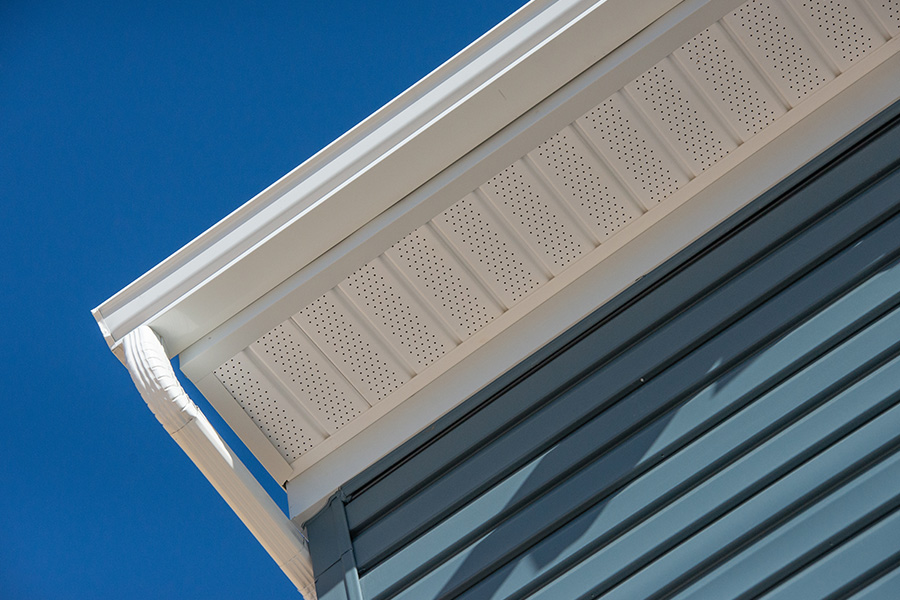
For a roof ventilation system to function effectively, there must be a balance between intake and exhaust vents.
This balance ensures that air can move freely and efficiently through the attic, maximizing the system’s ability to regulate temperature and moisture.
A well-designed roof ventilation system offers numerous benefits, including prolonged roof life, reduced energy costs, improved indoor air quality, and enhanced comfort for the home’s occupants.
By understanding the basics of a roof ventilation system, homeowners can appreciate its role in maintaining a safe, efficient, and comfortable living environment.
Intake Vents
Intake vents are located at the lower parts of the roof, such as the eaves or soffits, intake vents draw fresh air into the attic.
They form the initial part of the ventilation cycle, ensuring that a constant supply of outdoor air enters the space.
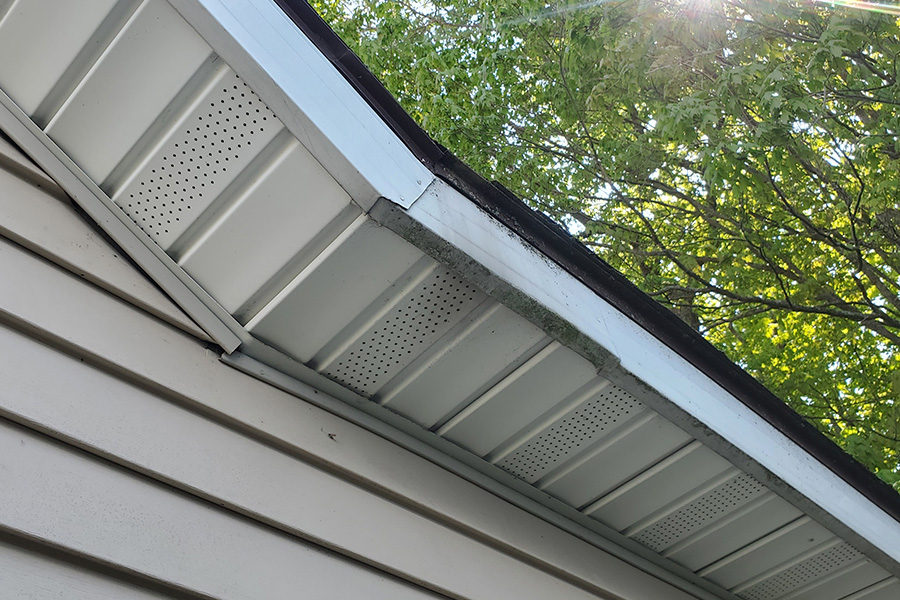
Soffit Vents: Soffit vents are installed under the eaves of a roof, allowing air to flow into the attic. They are one of the most common types of intake vents.
Roof Intake Vents: Roof intake vents are installed directly on the roof surface and serve as an alternative or supplement to soffit vents, especially in homes with limited soffit space.
Exhaust Vents
Exhaust vents are positioned near or at the roof’s peak, exhaust vents allow warm, moist air to escape from the attic.
These vents create a pathway for air to exit, completing the ventilation cycle and preventing the buildup of heat and humidity.
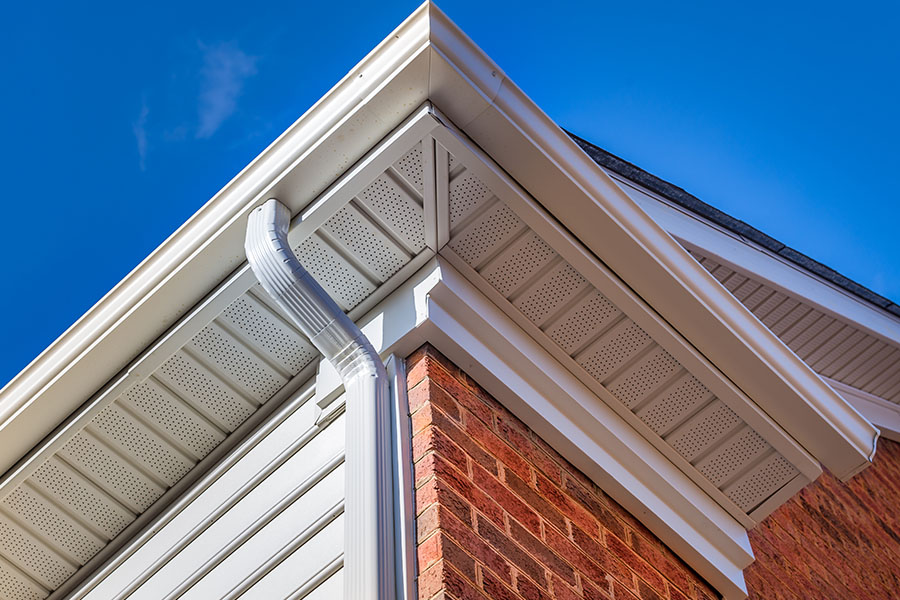
Static Exhaust Vents
Static exhaust vents are a category of roof ventilation that operates without mechanical assistance, relying instead on natural airflow principles to expel hot, moist air from the attic.
These vents play a critical role in maintaining the attic’s temperature and humidity levels, contributing to the overall health of the roofing system and the home itself.
Ridge vents are one of the most effective types of static exhaust vents.
They are installed along the entire length of the roof’s peak, creating a continuous outlet for hot air to escape.
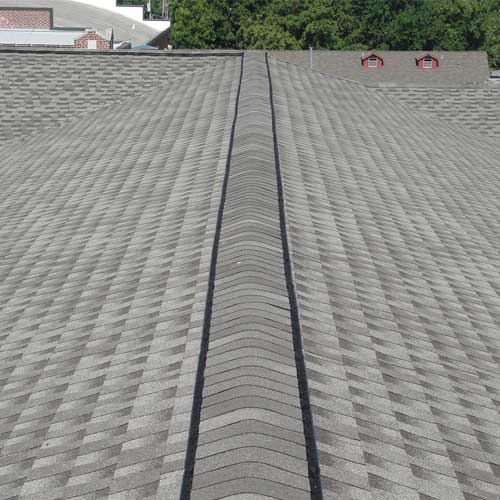
By taking advantage of the natural rising of warm air, ridge vents efficiently allow this air to exit the attic, preventing heat buildup.
- Popularity and Effectiveness: Ridge vents are particularly popular in regions like Tulsa and its surrounding areas due to their excellent performance in promoting airflow. Their continuous design ensures that hot air is expelled evenly across the roof, enhancing the ventilation process.
- Aesthetic Appeal: Beyond their functional benefits, ridge vents are favored for their subtle appearance. They blend seamlessly with the roofline, maintaining the aesthetic integrity of the home while providing robust ventilation.
Hip vents are similar to ridge vents but are tailored for roofs with hipped designs.
These vents are installed along the hipped portions of a roof, which are the sloping sides that meet at the roof’s ridge.
- Additional Ventilation: Hip vents provide extra ventilation to areas that might otherwise be difficult to ventilate with ridge vents alone. They ensure that air circulation is optimized throughout the entire attic space, especially in more complex roof designs.
- Complementary Use: Often, hip vents are used in conjunction with ridge vents to provide comprehensive ventilation coverage, ensuring all parts of the roof benefit from efficient air exchange.
Box vents, also known as roof louvers, are another type of static exhaust vent.
They are fixed, non-mechanized vents that offer a straightforward solution for expelling hot air from the attic.
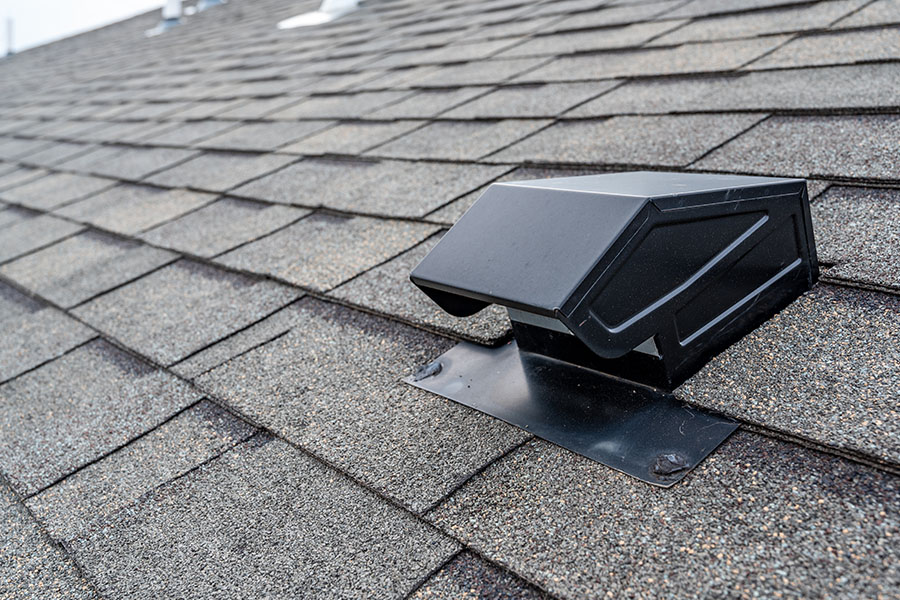
- Placement and Function: Box vents are typically installed near the roof’s peak but can be distributed across the roof to ensure even ventilation. They work by allowing rising hot air to naturally vent out through the opening.
- Versatility: While they can function independently, box vents are often used in conjunction with other ventilation systems, like ridge or soffit vents, to create a more comprehensive airflow strategy.
- Cost-Effectiveness: Box vents are generally more affordable and easier to install than some other types of vents, making them a practical choice for homeowners looking to improve attic ventilation without significant expense.
Powered Exhaust Vents
Powered exhaust vents are a type of roof ventilation system that actively expels air from the attic using mechanical means, such as electric or solar-powered fans.
These vents are particularly beneficial for homes where passive ventilation is insufficient to maintain ideal attic conditions due to architectural constraints or specific climate challenges.
Roof-mounted exhaust vents are installed directly on the roof’s surface and are equipped with fans designed to enhance airflow.
Here are some key features and benefits:
- Active Airflow Enhancement: By utilizing a fan, these vents significantly boost the movement of air out of the attic, helping to rapidly expel hot, humid air. This active system is especially valuable in situations where natural airflow is inadequate.
- Suitability for Complex Roofs: Homes with complex roof designs or limited passive ventilation can greatly benefit from roof-mounted exhaust vents. They provide a reliable solution where ridge vents or static systems may not be as effective.
- Energy Considerations: While these vents can be powered by electricity, many models are available with solar panels, allowing them to operate using sustainable energy. This not only reduces reliance on grid electricity but also lowers operational costs.
Gable-mounted exhaust vents are installed in the gable walls of a home, using fans to draw air out of the attic space.
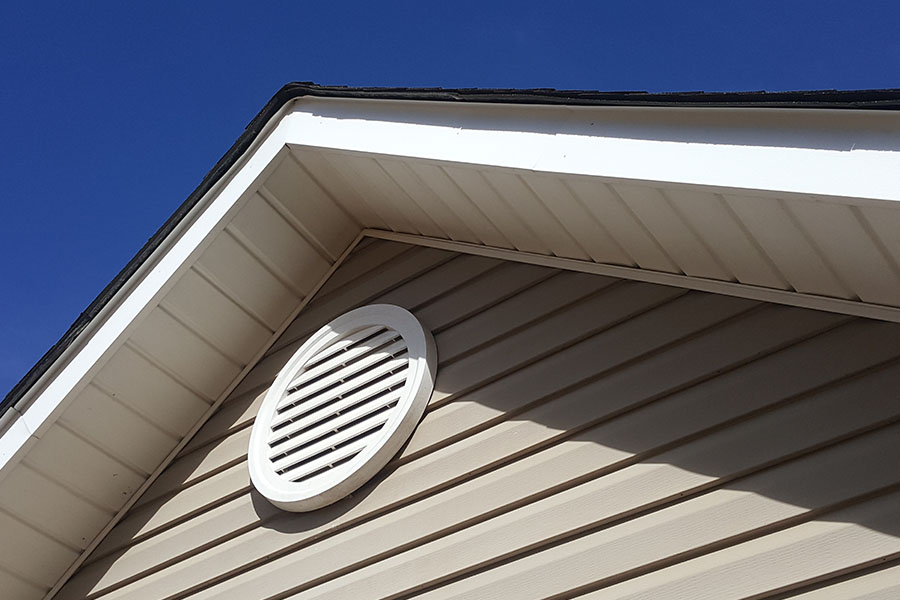
Here’s how they function and why they might be chosen:
- Strategic Placement: Positioned on the vertical walls at the ends of the attic, these vents take advantage of existing structural features to facilitate ventilation. They are particularly useful in homes where roof space for vents is limited or where additional ventilation is needed alongside roof-mounted units.
- Enhanced Ventilation Efficiency: The use of a fan in gable-mounted vents ensures that air is actively pulled from the attic, which can enhance the overall efficiency of the ventilation system. This is especially important in climates with high humidity or during extreme temperatures.
- Versatility and Integration: Gable-mounted vents can be integrated with other ventilation systems to create a comprehensive solution. By working alongside passive vents, they ensure a balanced airflow, preventing issues such as moisture buildup or excessive heat.
Mechanical Exhaust Vents
Mechanical exhaust vents are an innovative solution for enhancing attic ventilation by utilizing natural forces or mechanical mechanisms to boost airflow.
Unlike passive systems that rely solely on natural convection, mechanical vents actively facilitate the exchange of air, making them particularly effective in a variety of environmental conditions.
How Insulation and Roof Ventilation Work Together
Insulation and roof ventilation are two critical components of a home’s energy management system that work in tandem to optimize thermal efficiency and protect structural integrity.
Proper insulation acts as a thermal barrier, reducing the transfer of heat between the attic and the living spaces below, thereby maintaining a stable indoor temperature and enhancing overall comfort.
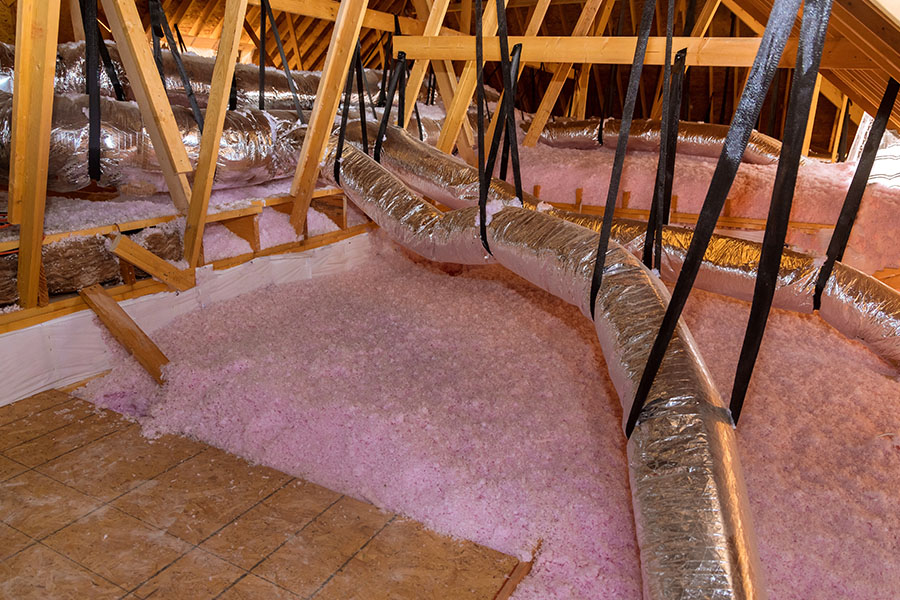
This efficiency is further bolstered by effective roof ventilation, which ensures a consistent airflow through the attic, preventing the buildup of excess heat and moisture.
Together, these systems significantly lower heating and cooling demands, translating into noticeable utility bill savings for homeowners.
A well-ventilated attic expels hot air in the summer and mitigates the risk of ice dam formation in the winter, both of which can otherwise lead to increased energy consumption.
Moreover, by keeping the attic dry, ventilation plays a crucial role in preventing moisture-related issues such as wood rot, mold growth, and shingle breakdown, thus preserving the roof’s longevity and structural soundness.
This synergy between insulation and ventilation not only enhances energy efficiency but also protects the roof from premature degradation, ensuring that the home remains both comfortable and resilient over time.
Which Type of Roof Vents are Best?
Selecting the best type of roof vents for homes in Tulsa and surrounding areas involves evaluating multiple factors, such as the home’s architecture, roof shape, and local climate conditions.
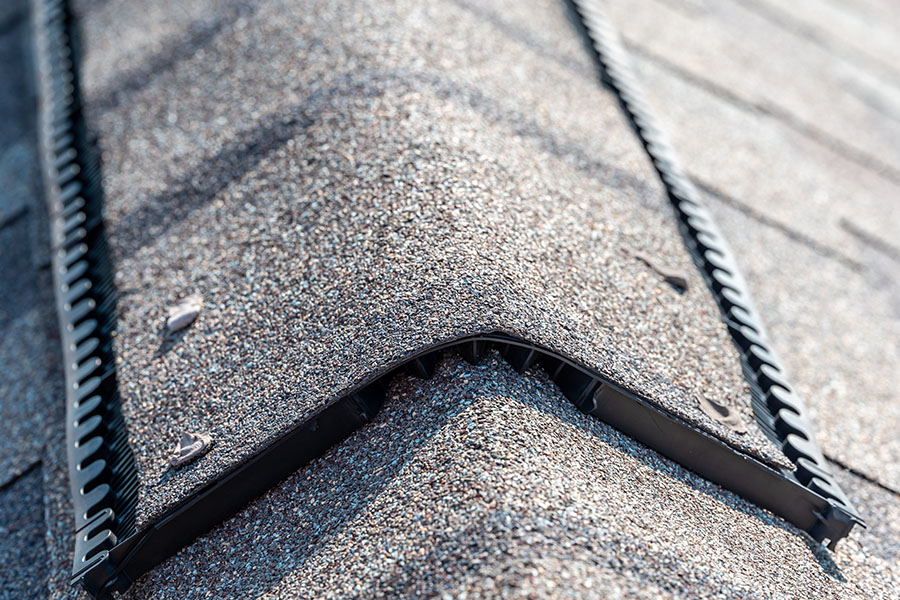
Ridge vents are a popular choice due to their ability to provide continuous ventilation along the roof peak, offering both effectiveness and a subtle appearance.
Box vents are also commonly used for their ease of installation and flexibility in enhancing airflow when used alongside other vents like soffit or gable vents.
However, the ideal roof ventilation system is not universally applicable; it should be customized to meet the specific needs of each home.
Factors such as roof pitch, design complexity, and local weather patterns must be considered.
Homes with steep roofs or complex designs might require a mix of vent types to ensure effective air circulation.
Consulting an experienced roofing contractor is crucial to assess these variables and recommend the best vent types and configurations, ensuring optimal energy efficiency, roof protection, and indoor comfort.
Importance of Working with an Experienced Roofing Contractor
Partnering with an experienced roofing contractor like Tulsa ProTech is essential for optimizing your home’s roof ventilation system.
A knowledgeable contractor can assess the specific needs of your home, considering factors like architectural design, roof shape, and local climate conditions.

Tulsa ProTech’s expertise ensures they recommend the best ventilation strategies, promoting optimal airflow, energy efficiency, and roof longevity.
Proper ventilation helps regulate attic temperatures, reduces the burden on heating and cooling systems, and prevents moisture issues like mold and structural damage.
By choosing Tulsa ProTech, homeowners gain confidence that their roof ventilation system meets the highest standards, safeguarding their investment and ensuring comfort and protection.
Conclusion
In Oklahoma, where the climate can be particularly harsh, effective roof ventilation is not just a luxury—it’s a necessity.
By ensuring proper airflow through the attic, homeowners can enjoy a range of benefits, from reduced utility bills to an extended roof lifespan.
While ridge vents and box vents are popular choices in Tulsa and surrounding areas due to their efficiency and unobtrusive design, the best solution always depends on the specific needs and architecture of each home.
Collaborating with an experienced roofing contractor is crucial in selecting the right ventilation system.
They bring the expertise needed to assess your home’s unique requirements and recommend a customized solution that enhances energy efficiency, protects structural integrity, and ultimately ensures your home remains comfortable and safe year-round.
Prioritizing proper ventilation today can save significant costs and headaches in the future, making it a wise investment for any homeowner.
Contact Tulsa ProTech and get the best Roof Vent for your Tulsa home!
Examples of Our Tulsa Roofing Work
You may want to check more of our completed projects here!
Need Help With Your New Roof?
Pro-Tech Residential Roofing services all of northeast Oklahoma, including the communities: Tulsa, Bartlesville, Bixby, Broken Arrow, Jenks, Catoosa, Coweta, Claremore, Collinsville, Glenpool, Grand Lake, Inola, Mounds, Muskogee, Oologah, Owasso, Pryor, Skiatook, Sand Springs, Sapulpa, Tahlequah and Wagoner.
We provide roofing services in Tulsa and throughout northeast Oklahoma. View a more complete gallery of Oklahoma roofing projects.
If you need roofing in Tulsa or any Oklahoma community, give us a call at (918) 250-7663 or contact us here.

